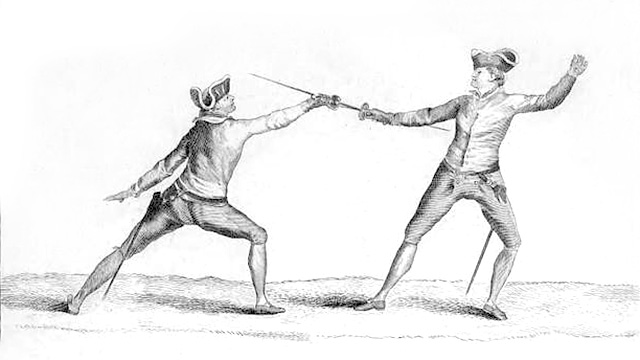The objective of fencing is to score points by touching your opponent with the tip of your sword, while avoiding being touched yourself.
Below are the basic rules for fencing competitions, but there are many other details and nuances to the sport, including different techniques and strategies for each type of sword, and rules for penalties and disqualifications for breaking the rules.
Fencers use one of three types of swords: the foil, the epee, and the sabre (see weapons). They also wear protective gear that includes a mask, jacket, glove, and pants (see fencing equipment). Fencing matches take place on a piste, which is a long, narrow strip.
 Fencing diagram (1765)
Fencing diagram (1765) Fencing matches are timed, with each bout lasting three minutes or until one fencer scores 15 points. Points are awarded based on where the fencer makes contact with their opponent. In foil fencing, only hits to the torso count as points. In epee fencing, hits to any part of the body count as points. In sabre fencing, hits to the torso and arms count as points.
Fencing matches are overseen by a referee, who is responsible for making decisions about the validity of hits and enforcing the rules of the sport. Fencing also has a strict set of etiquette rules, including saluting your opponent and the referee before and after the bout, and showing good sportsmanship throughout the competition.
Related Pages
- Fencing Equipment
- About the sport of fencing
- See the main fencing page
- Rules for Sports


 Current Events
Current Events